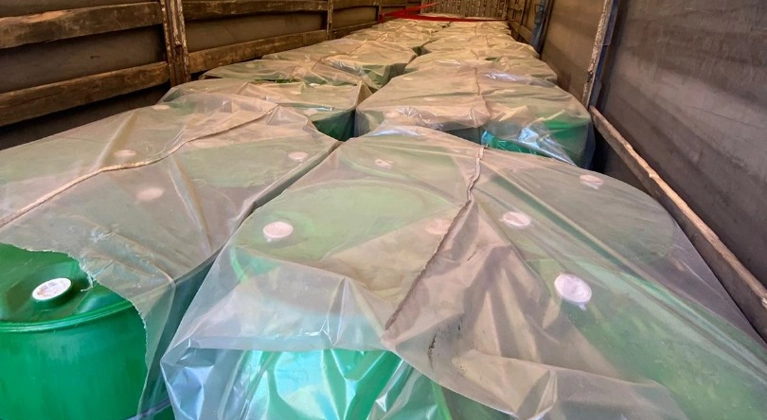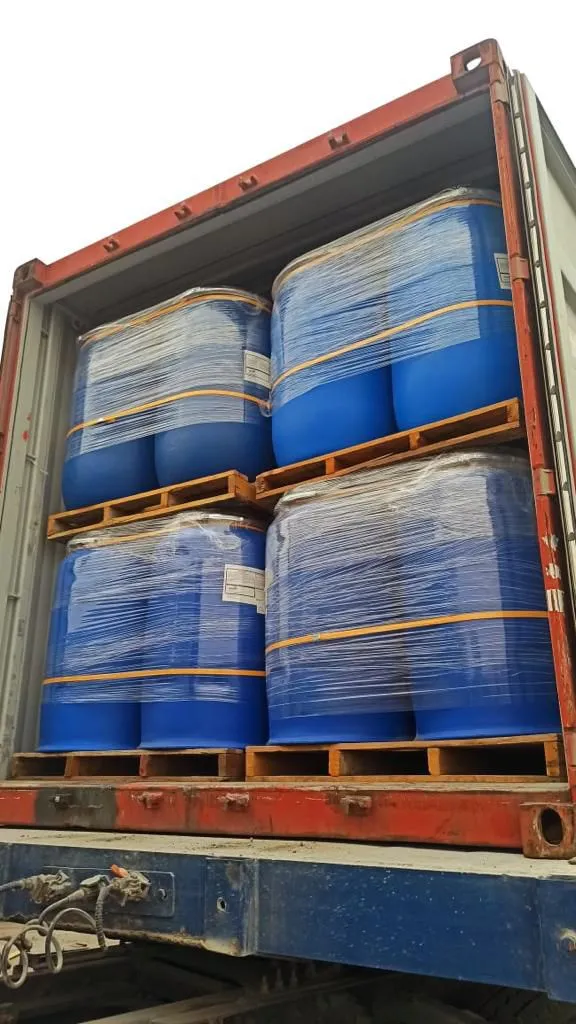Supplier of Diethylene glycol-DEG from Turkey and Dubai UAE

Diethylene Glycol Description
Diethylene glycol (DEG) is a versatile chemical in the glycol family, bridging the gap between common solvents and high-performance industrial intermediates. With the molecular formula C₄H₁₀O₃ and CAS number 111-46-6, this straight-chain diol (CH₂OHCH₂OCH₂CH₂OH) appears as a clear, colorless, and nearly odorless liquid at room temperature. Its hygroscopic properties make it excellent for moisture control, while its ether linkage provides enhanced thermal stability over monoethylene glycol.
Produced as a co-product of ethylene oxide hydrolysis, alongside monoethylene glycol and triethylene glycol, DEG is widely used in resins, antifreeze, plastics, and industrial chemical manufacturing. Sourcing high-purity diethylene glycol ensures consistent quality, scalability, and reliable supply for global industrial operations.
Physical and Chemical Properties of Diethylene Glycol (DEG)
DEG’s appeal lies in its practical, performance-driven properties. Key attributes include:
-
Appearance: Clear, water-white liquid for easy quality verification.
-
Odor: Virtually odorless, suitable for sensitive applications.
-
Density/Specific Gravity (20°C): 1.118 g/cm³.
-
Boiling Point: 245°C, ideal for high-temperature processes.
-
Freezing Point: -10.5°C, supporting low-temperature stability.
-
Viscosity (20°C): 35.7 mPa·s for improved film-forming and coating performance.
-
Solubility: Fully miscible in water, alcohols, and organic solvents.
-
pH (100% solution): 6.0–7.5, mildly acidic for broad compatibility.
-
Flash Point (closed cup): 154°C, enhancing safety in flammable-adjacent processes.
-
Chemical Stability: Hygroscopic, low volatility, and long-term storage stable.
These properties make DEG an excellent choice for industrial coolants, polyester resins, plastics, and coatings, optimizing production efficiency while reducing waste.
Applications and Uses of DEG
Diethylene glycol is a multifunctional industrial chemical used across a wide spectrum of applications. Its higher boiling point, viscosity, and solvency compared to monoethylene glycol make it ideal for processes requiring stability and durability.
-
Solvent in Paints, Coatings, and Inks: Dissolves resins, controls viscosity, and improves surface finish for durable coatings.
-
Humectant in Cosmetics and Tobacco: Maintains moisture in creams, lotions, and tobacco products, extending shelf life.
-
Chemical Intermediate for Polyester Resins and Polyurethanes: Essential for unsaturated polyester resins, fiberglass composites, and flexible polyurethane foams.
-
Plasticizers and Esters: Softens PVC and other polymers, enhancing flexibility for cables, flooring, and packaging.
-
Antifreeze and Coolants: Provides thermal stability for industrial machinery and HVAC systems.
-
Deicing Fluids: Lowers freezing points in aviation and runway applications.
-
Textiles and Fabric Finishing: Improves dye uptake, softness, and fabric hand-feel.
-
Gas Dehydration: Removes water from natural gas streams to prevent hydrate formation in pipelines.
-
Lubricants, Adhesives, and Sealants: Stabilizes synthetic lubricants and enhances adhesion in adhesives.
For even broader thermal tolerance, DEG is often blended with monoethylene glycol to produce hybrid coolants optimized for performance and cost-efficiency.
Handling, Storage, and Transportation of Diethylene Glycol
Safe handling and storage of DEG are essential due to its toxicity via ingestion, inhalation, or skin contact. Proper precautions ensure uninterrupted industrial operations:
-
Handling Precautions: Wear nitrile gloves, goggles, and respirators; work in ventilated areas; avoid vapors from heating; wash thoroughly after contact.
-
Storage Recommendations: Store in tightly sealed, corrosion-resistant containers in cool (15–25°C), dry, ventilated spaces. Protect from moisture, oxidizers, and acids.
-
Transportation Protocols: Classified as non-hazardous (UN 3082 for marine eco-risks). Ship in clean, dry tanks with spill kits; secure against leaks and vibrations. Load up to 23 tons per 20-foot container following IMO standards.
These measures safeguard personnel, protect product integrity, and ensure consistent supply from port to plant.
Packing Details and Container Loading for Diethylene Glycol
Diethylene glycol can be supplied in flexible packaging formats to meet bulk or smaller-volume needs:
-
Bulk Shipments: ISO tanks or seagoing vessels carrying 22–23 tons per 20-foot container, with heating options for high-viscosity handling.
-
Intermediate Volumes: Flexitanks, road tankers, or 1,000 L IBCs (20 units, ~20 tons per 20-foot container) for mid-scale distribution.
-
Smaller/Custom Solutions: 220 kg HDPE or steel drums (80–90 units, ~17.6–19.8 tons per 20-foot container) for trials or regional deliveries.
Proper packing ensures product stability, shipping efficiency, and regulatory compliance, simplifying logistics and reducing costs.

TECHNICAL DATA SHEET OF DIETHYLENE GLYCOL (DEG)
| TEST | TEST METHOD | UNIT | VALUE |
|---|---|---|---|
| PURITY | ASTM E-202 | WT.% | 99.8 MIN. |
| MONOETHYLENE GLYCOL | ASTM E – 202 | WT.% | 0.05 MAX. |
| TRIETHYLENE GLYCOL | ASTM E – 202 | WT.% | 0.05 MAX. |
| WATER CONTENT | ASTM E – 202 | WT.% | 0.05 MAX. |
| ACIDITY AS ACETIC ACID | ASTM D – 1613 | PPM | 50 MAX. |
| ASH CONTENT | DC – 254/A | PPM | 50 MAX. |
| SPECIFIC GRAVITY (20/20℃) | ASTM D – 891 | – | ASTM D – 891 |
| COLOR | ASTM E – 1209 | Pt-co | 10 MAX. |
| DISTILLATION @ 760 MM-Hg | ASTM D – 1078 | ℃ | 242 MIN. |
| IBP | ASTM D – 1078 | ℃ | 250 MAX. |
| DP | ASTM D – 1078 | ℃ | 250 MAX. |


